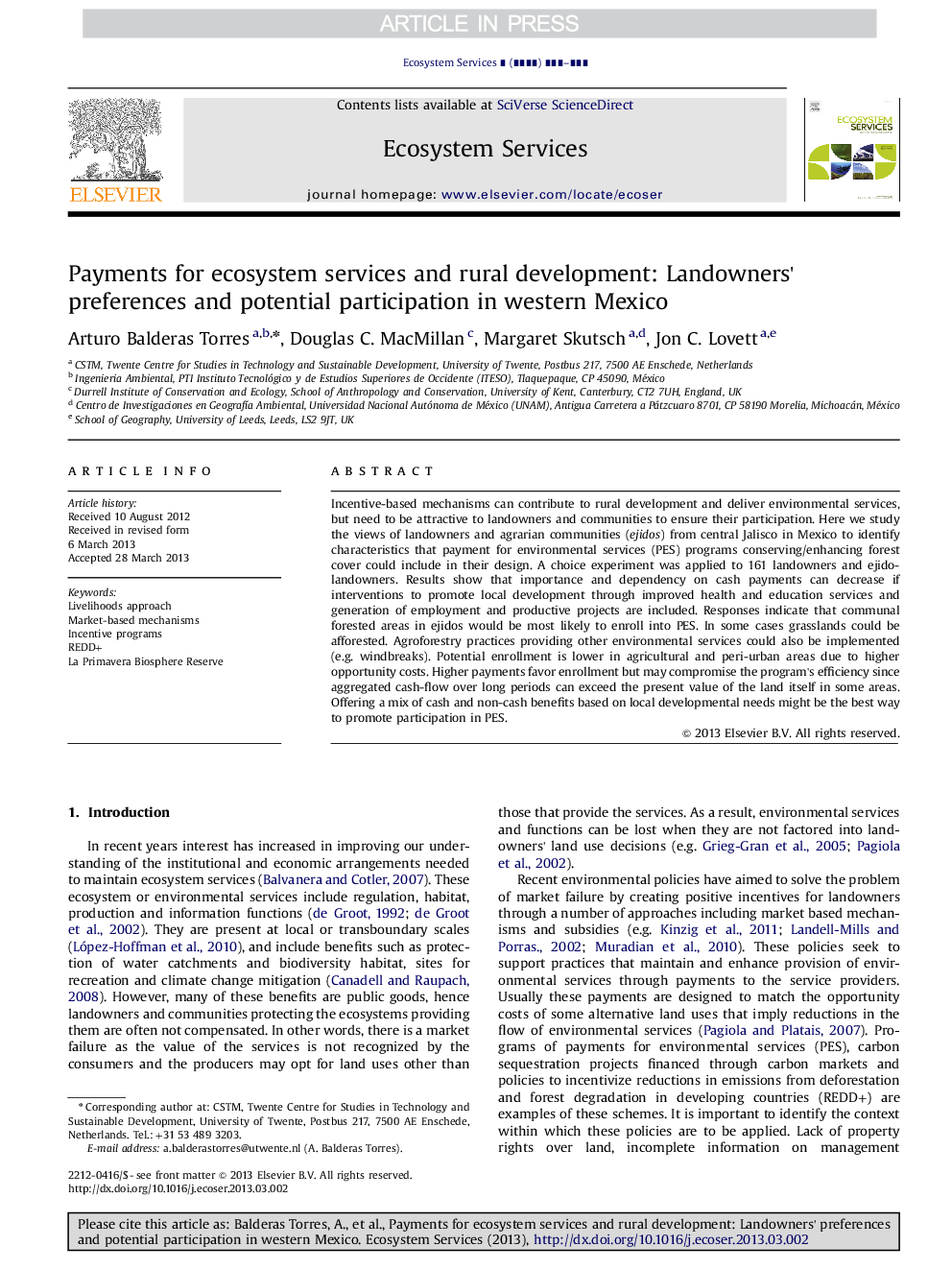| Article ID | Journal | Published Year | Pages | File Type |
|---|---|---|---|---|
| 6556956 | Ecosystem Services | 2013 | 10 Pages |
Abstract
Incentive-based mechanisms can contribute to rural development and deliver environmental services, but need to be attractive to landowners and communities to ensure their participation. Here we study the views of landowners and agrarian communities (ejidos) from central Jalisco in Mexico to identify characteristics that payment for environmental services (PES) programs conserving/enhancing forest cover could include in their design. A choice experiment was applied to 161 landowners and ejido-landowners. Results show that importance and dependency on cash payments can decrease if interventions to promote local development through improved health and education services and generation of employment and productive projects are included. Responses indicate that communal forested areas in ejidos would be most likely to enroll into PES. In some cases grasslands could be afforested. Agroforestry practices providing other environmental services could also be implemented (e.g. windbreaks). Potential enrollment is lower in agricultural and peri-urban areas due to higher opportunity costs. Higher payments favor enrollment but may compromise the program's efficiency since aggregated cash-flow over long periods can exceed the present value of the land itself in some areas. Offering a mix of cash and non-cash benefits based on local developmental needs might be the best way to promote participation in PES.
Related Topics
Life Sciences
Agricultural and Biological Sciences
Agricultural and Biological Sciences (General)
Authors
Arturo Balderas Torres, Douglas C. MacMillan, Margaret Skutsch, Jon C. Lovett,
